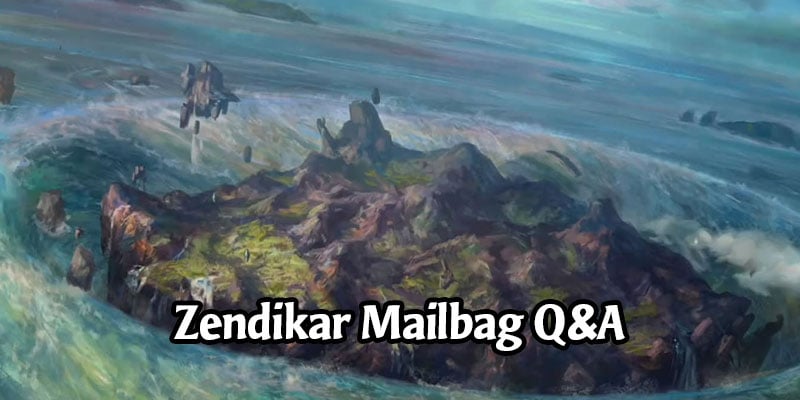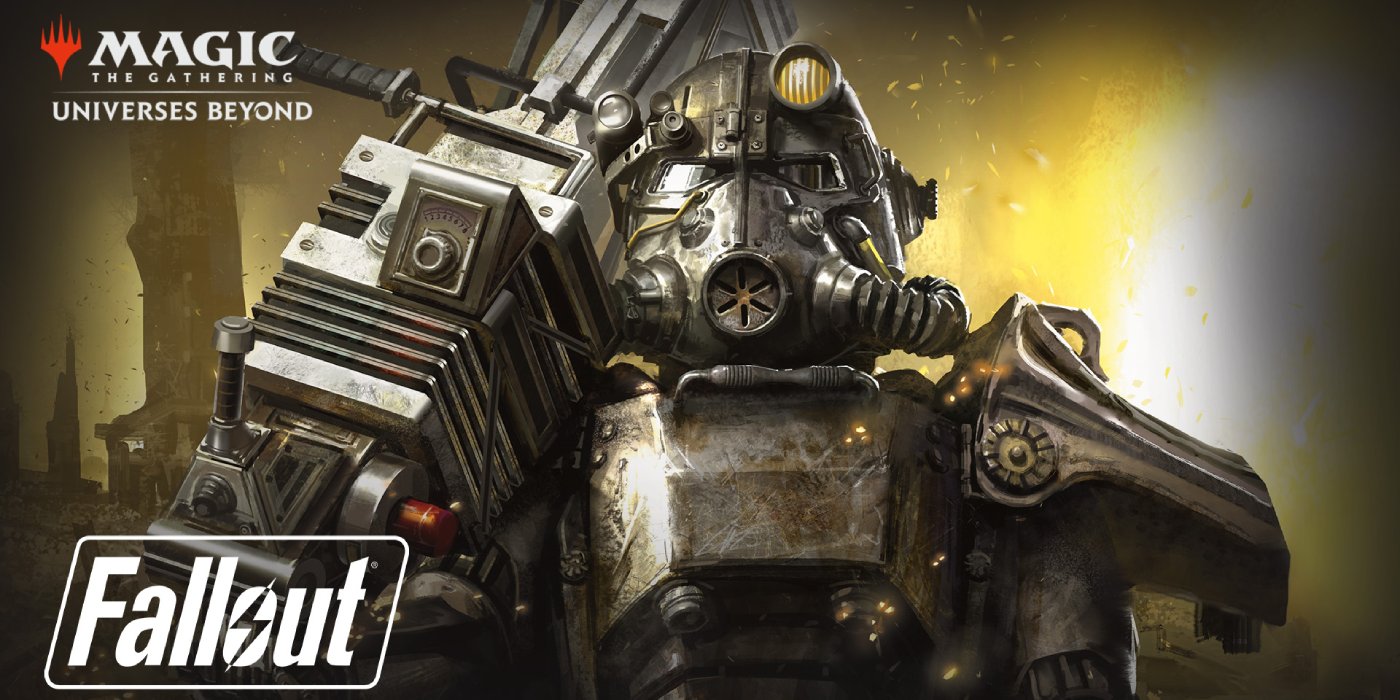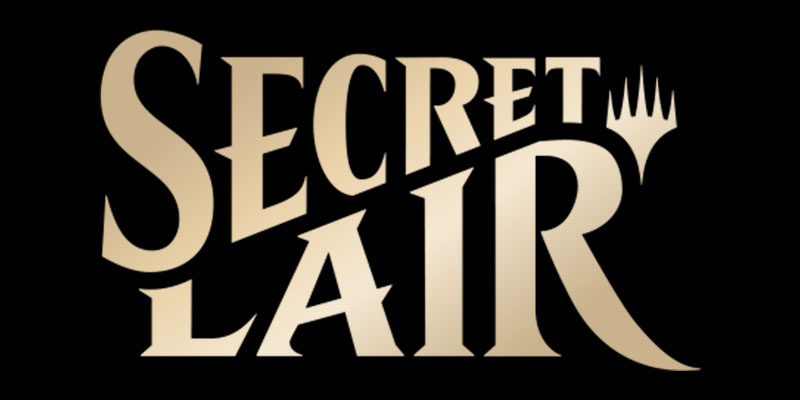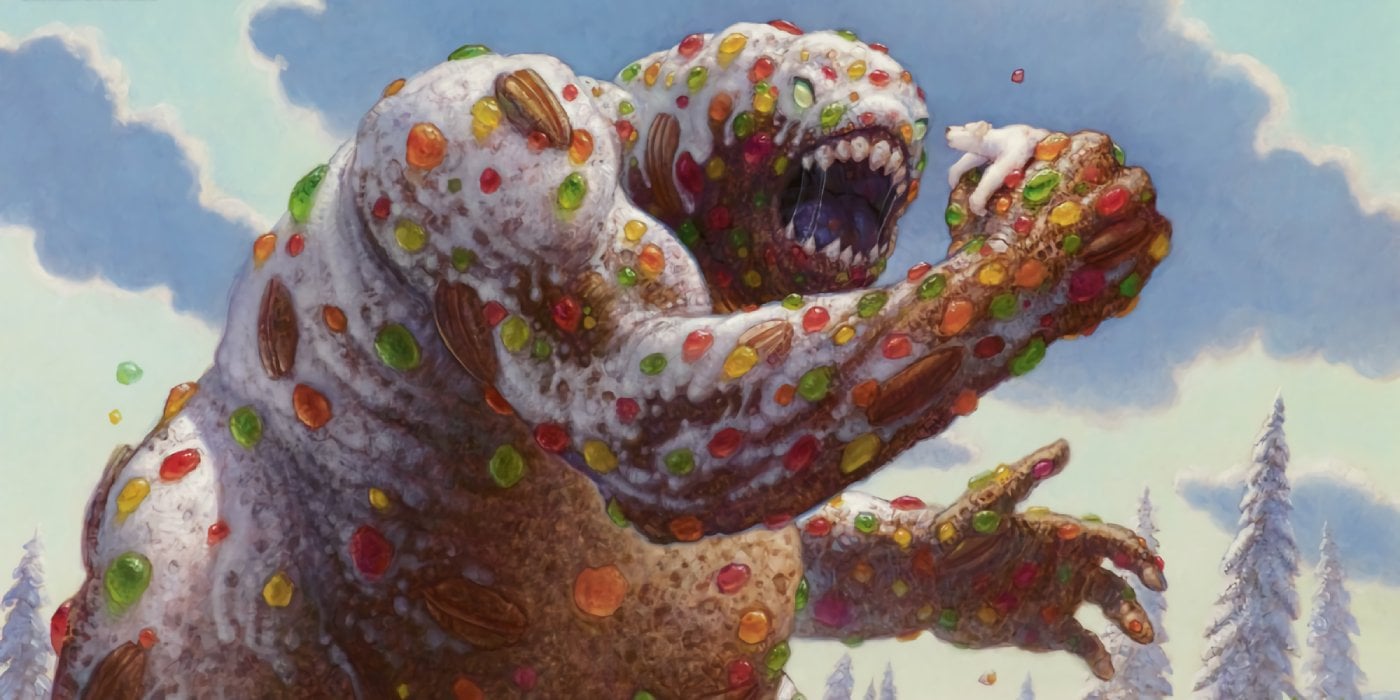Magic's Mark Rosewater dove into community questions on Zendikar Rising. We've recapped the important bits below along with the full Q&A.
- Allies were supposed to make a return to Zendikar, but didn't pan out this time. They will return "on any future return to Zendikar".
- Zendikar still has "very deep wells" of design space. It isn't being retired.
- The reason they split duals up into a weird 6 Pathways this time was due to the party mechanic and going for half ally, half enemy.
- The remaining 4 Pathways arrive in Kaldheim, next year's first release.
- MDFCs will always have the land on the backside of the card. They originally wanted it on the front side because of the land-focused Zendikar, but the land side is arguably the least important of the two.
- Creature Lands were explored but lost out to MDFCs due to set size restrictions.
- Positive internal reception to the parties mechanic paved way for the D&D set. They even offered the D&D Vision Design Team to wait on using parties but they didn't mind.
- No Eldrazi this time around because there are no Eldrazi on Zendikar right now.
- We didn't receive Red and White Inscriptions due to them being less liked than the other 3. Black was even potentially going to be pulled.
- Zendikar Rising took player data from the original Zendikar to figure out what to put into the set - what player's liked most.
- Enemy duals can be reprinted in a lot of different products whereas MDFCs can't. This is why they didn't create counterparts to the previous Zendikar's ally-only duals.
- There's a great bit on Black and targeted enchantment removal. Read on for full context.
Quote From Mark Rosewater Are allies now permanently dead? I know it wasn't a perfect mechanic, but fans are sad they'll never been seen again.
Allies are not permanently dead. It was 100% my intent to have them in Zendikar Rising. As I've talked about a few times, every party member was handed off from vision design as an Ally in addition to its other class. Though sometimes, a set comes together and things just don't work out based on how a variety of factors interact with one another (the biggest being the party mechanic's tribal center). I have every intention to have Allies return on any future return to Zendikar. Their absence is the thing in the set I feel the worst about.
What was the reasoning for choosing the mechanics that came back?
Landfall is the most popular mechanic from original Zendikar, and kicker was a good fit to balance out the set as it was handed over from vision design.
Does Zendikar still have any design space after this set or should it be retired?
Zendikar is the combination of two themes: land-focused mechanics and top-down adventure tropes. Both are very deep wells. I could probably make a few sets out of just old Zendikar mechanics that I couldn't fit into Zendikar Rising.
I'd love to know the thought process behind only 6 out of 10 dfc dual lands. A very weird number/mix of ally and enemy as opposed to the normal all ally/all enemy way we see duals.
Here's what happened. We knew we wanted to have some number of the pathways in the set, but we didn't have space for all ten, so we examined which two-color combinations were most important. That ended up being the combinations that represented the four classes from the party mechanic (Cleric, Rogue, Warrior, and Wizard). In order, that's white-black, blue-black, red-white, and blue-red (these are the colors that the class is primary and secondary in). Those four colors by themselves seemed odd though because they exclude green. Also, if we're going to split six and four, it seemed like the land-focused set should get the six.
The problem was that no matter what green pathway we chose, if we had five, it would be one color with three lands, three colors with two, and green with one. We've done five dual lands many, many times, and we've always color balanced the cycle (aka had an equal representation of each color). We decided it was better to do six and four, as six can't be equally balanced and there's no precedent to weigh it against. We chose the two ally green lands (red-green and green-white) so that the six would be half ally and half enemy.
Will there, after Kaldheim's release, be symmetry to the MDFC dual land cycle? Asking for a Mel friend.
The four Pathways in Kaldheim (and, yes, they're named Pathways) were designed to complement the six Pathways in Zendikar Rising. We're not monsters.
You mentioned that MDFCs were planned for Innistrad, what other sets since then were they considered for?
They weren't planned for original Innistrad. Just when we designed the transforming double-faced lands, the ability to make modal double-faced lands was pretty obvious. The first set to ever have the MDFCs planned for it was Strixhaven, and the first set to have them in a vision design file was Zendikar Rising (as it was the first of the three sets with MDFCs to be designed).
I like the flavor of "digging up" mdfc lands to get at the spells beneath them, but I was surprised how little that comes up in the set. Did it ever play a larger role in the design?
There's Tazeem Raptor, Pyroclastic Hellion, Kazandu Stomper, and Nissa's Zendikon at common (and Into the Roil can bounce a creature so you can play a land on the other side to trigger landfall), and Murasa Rootgrazer, Confounding Conundrum, and Wayward Guide-Beast at higher rarities. While it could have had an even larger as-fan, it's definitely a theme in the set.
How much effort was put in MDFCs to make sure players can always tell which side is the front (for rules purposes)?
We made a symbol (the triangle one in the upper left-hand corner of the cards). Also, on any MDFC that isn't a land on both sides, the land is always on the backside.
What were some of the dicussions/concerns you all worked through when looking at the MDFCs or the Dual-Faced lands? Any good stories about how they got made?
There were a lot of different things that had to get worked out about how MDFCs were going to work and how they were going to look. Here's a few of the issues we had to tackle:
- Do the rules treat this as a split card or a double-faced card?
MDFCs were basically a merging of two existing mechanics. The issue was that those two mechanics don't work the same. Split cards are both cards in every zone. Double-faced cards (all of which were transforming double-faced cards at the point of this discussion) only are their front face in every zone other than the stack and the battlefield. In my mind, MDFCs were more split card in spirit, so I wanted to explore having them work as such. Eli, the rules manager at the time, talked with me at length about what exactly that would mean and what kind of corner cases the rules would have to cover. It was a long list, and many of the answers did not intuitively match one another. While this discussion was ongoing, we had a meeting with our digital partners (from Magic: The Gathering Arena and Magic: The Gathering Online) to talk through our needs for Zendikar Rising. We brought up this issue with them. We talked through many of the issues Eli and I had discussed, and they asked for some time to think about it. They came back a few days later and said it would be very hard to execute. How important was it to us? Eli and I decided that it wasn't worth the pain we'd be putting everyone through when there was a clean way to handle it, so the double-faced path was chosen.
- How much information do we put on one side to let you know what's on the other side? And should both sides have information about the other side or just the front side?
From the very beginning, I was firm that I wanted the information to be on both sides of the card, so no matter which side was facing forward, you could know what the other side did without having to flip over the card and reveal to your opponent that you had a double-faced card. Early thoughts were to include as much information about the other side as possible. As we worked on the MDFC frame, we realized that if we wanted to leave ourselves as much text space as possible, that we had to limit how much text we shared about the other side. We ended up reducing it to one line. I'm sure some of you are saying "but everything fit with plenty of space on all the MDFCs in Zendikar Rising," why not have more space for the other side? My answer to that was that we were building the frames not just for the MDFCs in Zendikar Rising but also the ones in Kaldheim and Strixhaven, some of which might be a little wordier than lands that tap for one color.
- What kind of symbol did we want?
Because all the TDFCs in the various Innistrad sets have symbols to represent the two sides, we knew we were going to want to do that on the MDFCs. The big question was how to visualize "side 1" and "side 2." We tried a bunch of different things, but the winner was the symbol of the first side has one of the "thing," and the symbol on the second side has two of the "thing." Numerous objects were designed, and the triangle proved to be visually the most aesthetic.
- Which side is the front side and which side is the backside?
We knew that we wanted some consistency. MDFCs with land on just one side should either always appear on the front or always appear on the back. Along with the symbols, this would be a tool to help people remember which is which side. Originally, we had the lands on the front, as this is Zendikar, and the common theme to the MDFCs in this set were the lands, but playtesting showed that you more often care that these cards are other card types in other zones than you care that they're lands, (them not being basic lands and not having basic land types made them hard to fetch out of your library), so we chose to put the lands on the second side.
We got one creature land in the set. Was there any consideration to reprinting the ones from worldwake?
We did do a bunch of exploration with having creature lands (I showed off one exploration in my vision design handoff last week), as animated lands are very much a Zendikar thing. Basically, they got edged out by MDFCs. There's only so much room for lands in the set, and MDFCs took up most of that space. This is one of the reasons, by the way, that there's lots of design space left for Zendikar, as each individual set can only support so much of a certain theme.
What are the discussions and shift in philosophy that led to black getting targeted enchantment removal?
The shift started with a talk I had with Erik Lauer. Erik had noted that black was the only non-blue color that was unable to destroy two different card types and that it was causing play design issues. He also noted that it was odd that artifacts had three colors that could deal with them but enchantments only had two. Black was the only non-blue color that couldn't destroy artifacts, but red also couldn't destroy enchantments. If we let black destroy enchantments, we could balance artifact and enchantment destruction and have each non-blue color have a card type they can't pinpoint destroy (white—land, black—artifact, red—enchantment, green—creature).
The two elements I asked for was that black can't destroy its own enchantments because we like making the "deal with the devil" enchantments in black and didn't want to make it easy for black to answer them, and that black be third to white and green in enchantment destruction. We started slow so we could test things and ramp them up. In Zendikar Rising, we're trying targeted destruction to see if that's pushing too far. If it is, we can pull it back in the future.
Why didn't you just hold off the Party mechanic until the D&D set?
The D&D set wasn't a thing yet when we were doing vision design. In fact, it was the positive internal reception to the party mechanic that helped us realize we should do a D&D set. We did offer up party to the D&D Vision Design team, but they were fine with us leaving it in Zendikar Rising.
No Eldrazi?
There were only really ever three Eldrazi on Zendikar—Emrakul, Ulamog, and Kozilek. Every other Eldrazi creature was just an extension of one of them. Ulamog and Kozilek were killed by the Gatewatch, and Emrakul left for another plane (Innistrad) where she is now trapped in the moon. For right now, that means there aren't any Eldrazi on Zendikar.
Why is there no white or red Inscription?
You know how sometimes in the past we've made a cycle and some of the cards in it were really cool and others were kind of lame? Well, the Zendikar Set Design team made a cycle of Inscriptions, and that's what happened. They really liked the blue, black, and green ones and didn't like the red and white ones. They tried redesigning them but couldn't get them on par with the three they liked, so instead of making an uneven cycle, they replaced the red and white Inscriptions with different and better cards they thought you all would enjoy more. The blue and green ones were the most important because the green-blue Draft archetype revolves around kicker. The team talked about pulling the black one, but they really liked its design, so they kept it.
In 2016, you said the lesson you learned from Battle for Zendikar was 'When returning to a world, you have to return to the things that players loved about it the first time you visited.' Do you feel that you delivered that with Party, no Expeditions, Quests, or Traps?
During vision design, we did exactly that; we looked back at all the data from original Zendikar to figure out what the players liked most. At the top of the list was full-art basic lands. We did that again. Next up was landfall. We did that again. After that, there were the innovative land mechanics. We did that again (with MDFCs). Then came Allies. We felt party was a cool take on the trope space that Allies filled and had every intention of all the party creatures being Allies. It didn't work out, but the intent was there. Next up was kicker. We brought that back.
Then there were animated lands. We designed some stuff, but it got squeezed out by the MDFCs. Next after those were traps. The biggest issue with traps is that we chewed up most of the design space when we originally did them. We ended up designing a new take on traps in vision design (again, see my column from last week). They were removed during set design. Next up were quests. Like traps, there's limited design space, so we tried something new in vision design (interestingly, something we first tried back in original Zendikar when designing the traps). They were also removed during set design. Also, while Expeditions were a Battle for Zendikar thing and not an original Zendikar thing, we did bring those back as well, as they were the most popular thing from that set.
So, we have full-art lands, landfall, innovative land design, a cool new take on the adventure party trope, kicker, and Expeditions. We did try a new take on animated lands, traps, and quests, but we didn't have enough room to use them. So, yes, I think we did a pretty good job. We did the number 1, 2, 3, and 5 most popular things from original Zendikar and the number 1 most popular thing in Battle for Zendikar. Number 4 we seriously tried, but circumstances worked against us. I think we did pretty good given that the set has size constraints that keep us from doing everything.
Was there a reason why creating a new cycle of duals was done when there were allied duals done in the last trip to Zendikar with still no enemy counterparts?
It basically boils down to this—there's a very narrow band of sets that can print MDFC dual lands, and we thought they'd be something that the players would really like. We saw the opportunity and decided to take advantage of it. There are numerous products that can print the enemy duals if we feel there's enough demand for them.




Comments
The fact none of these questions are 'wtf happened with Omnath' or 'but why does Omnath also draw a card when it's broken even without it' or 'why does playing standard right now mean you have to endure four awful, unfun games to every half-decent one' means the whole thing is a giant waste of time
Zendikar would have been a great set if they had refrained from printing Omnath. Unfortunately Omnath ruins pretty much the entire game right now. Cannot wait until this complete design failure will be banned and the clown fiesta ends. But I guess we will have to get used to this kind of nonsense every set from now on.